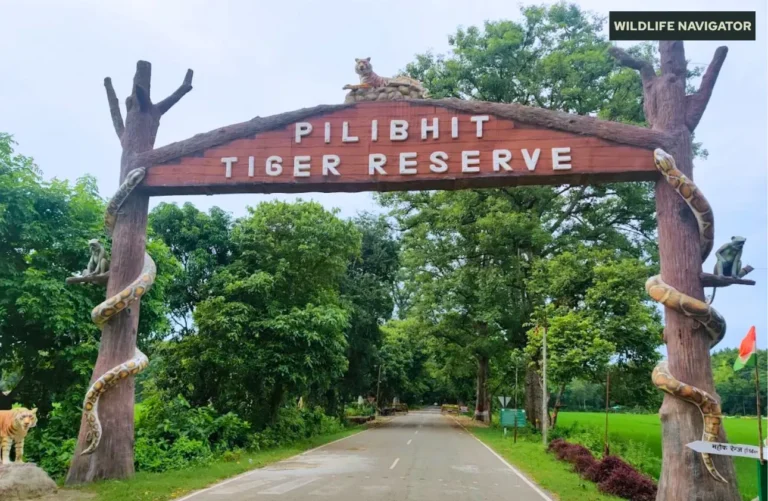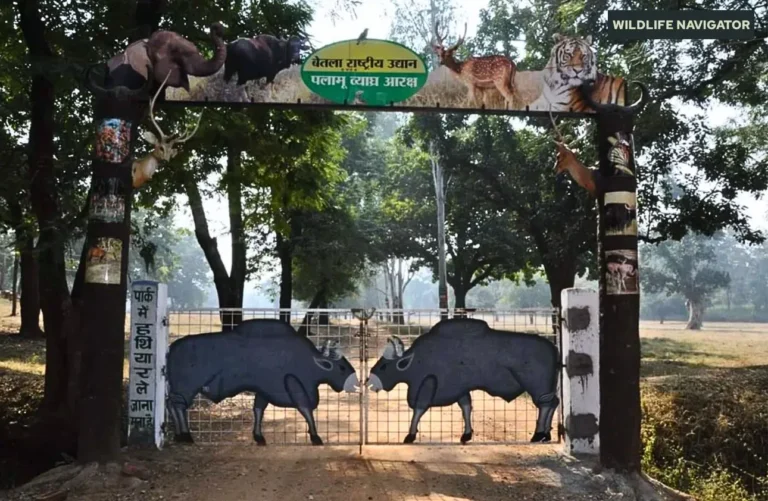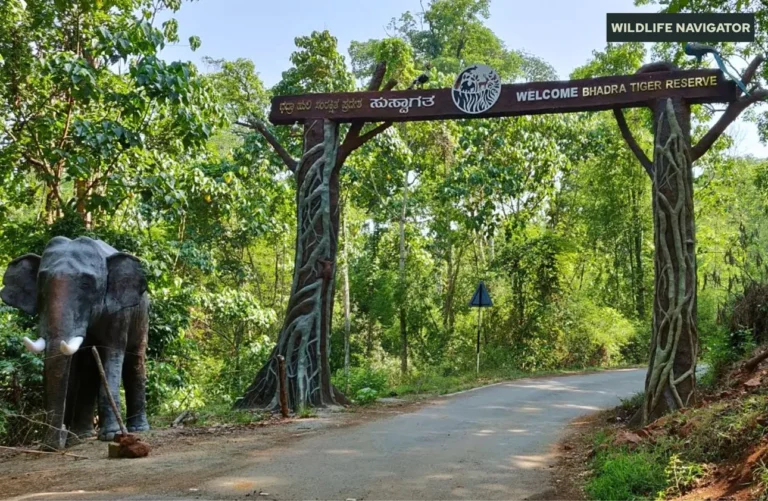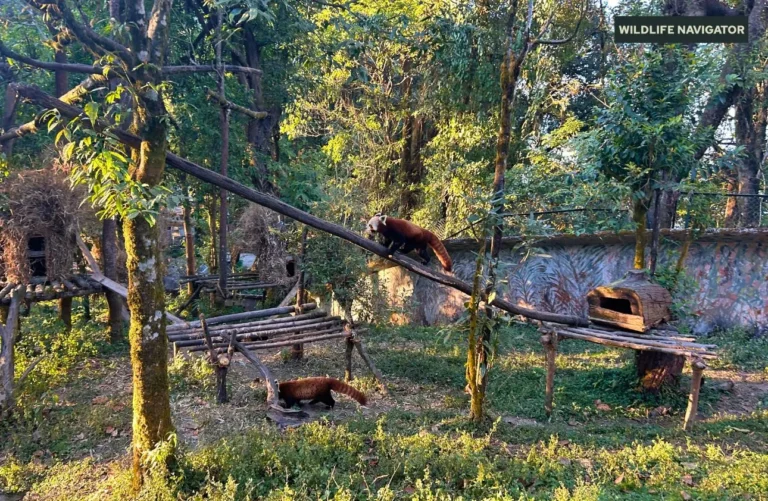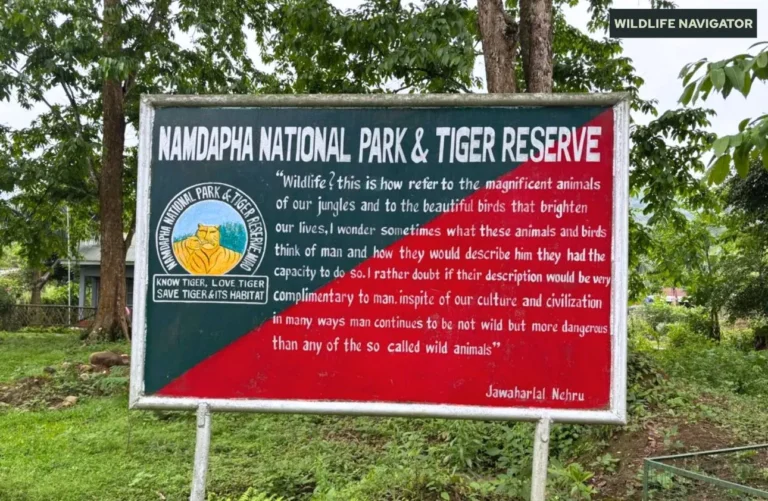Orang National Park – Complete Travel Guide, Safari, Wildlife & Tips

Orang National Park, nestled on the north bank of the mighty Brahmaputra River in Assam, India, is a hidden gem for wildlife enthusiasts and nature lovers. Often referred to as the “Mini Kaziranga”, Orang is renowned for its rich biodiversity, pristine grasslands, and riverine forests. Despite being smaller than some of India’s more famous parks, it holds a unique charm and is an essential habitat for the Indian one-horned rhinoceros, tigers, elephants, and a wide array of bird species.
This park is not just about wildlife; it is a harmonious blend of lush landscapes, wetlands, and riverine islands, making it a paradise for photographers, birdwatchers, and adventure seekers alike. Being part of the UNESCO tentative list for World Heritage Sites, Orang plays a crucial role in conservation efforts under Project Tiger and Project Rhino, contributing significantly to the protection of endangered species and fragile ecosystems.
Whether you are seeking a jeep safari through dense forests, a boat ride in the Brahmaputra, or a quiet retreat amidst nature, Orang National Park promises a memorable wildlife experience far from the crowds.
History, Geography & Landscape
History
The name “Orang” is believed to have originated from the Assamese word “Urang,” meaning a riverine island, reflecting the park’s location amidst the Brahmaputra River’s floodplains. Historically, this region was part of the Ahom kingdom and was used as a hunting ground by local rulers due to its abundance of wildlife.
Orang was initially declared a wildlife sanctuary in 1985 to protect its rich biodiversity and especially the Indian one-horned rhinoceros. Recognising its ecological importance, it was upgraded to a national park in 1999. Later, it was designated as a Tiger Reserve under Project Tiger, highlighting its significance in protecting tigers and other large mammals in Assam.
Geography
Orang National Park is located on the north bank of the Brahmaputra River in Assam, spread over approximately 78 sq. km. Its strategic location makes it a critical corridor between Kaziranga and Manas Tiger Reserves, allowing wildlife to move freely between these major protected areas.
The park’s terrain is a unique combination of riverine grasslands, tropical forests, wetlands, and floodplains. These diverse habitats support a wide range of flora and fauna, including large herbivores, carnivores, and a variety of bird species. Small rivers, streams, and oxbow lakes crisscross the park, creating ideal conditions for aquatic life and migratory birds.
Landscape & Climate
Orang experiences a subtropical climate with high humidity and heavy monsoons, influenced by the Brahmaputra River. Summers (March–May) are warm, while winters (November–February) are cool and pleasant, ideal for wildlife viewing. The monsoon season (June–September) often brings flooding, which replenishes the wetlands but also temporarily restricts access to some areas.
The park’s landscape is characterised by lush green grasslands interspersed with forest patches, river islands, and wetlands. This diversity of terrain creates habitats for large herbivores like rhinoceros and elephants, while also providing excellent camouflage and hunting grounds for tigers and leopards. Birdwatchers can enjoy spotting numerous species across wetlands, grasslands, and riverine forests.
Orang Tiger Reserve
Orang National Park was officially declared a Tiger Reserve under Project Tiger in 1999, highlighting its critical role in the conservation of Bengal tigers in Assam. Despite its smaller size compared to Kaziranga or Manas, Orang is strategically important as a wildlife corridor, connecting tiger populations across northern Assam. This ensures genetic diversity and allows tigers and other large mammals to move freely between protected areas.
Core Area vs Buffer Zone
The Tiger Reserve is divided into two main zones:
- Core Area: This zone is strictly protected and covers the most sensitive habitats within the park. No human activity, such as settlement, agriculture, or commercial exploitation, is allowed here. The core area is where tigers, rhinos, and other wildlife find safe refuge and breeding grounds.
- Buffer Zone: Surrounding the core, the buffer zone allows regulated human activity like eco-tourism, research, and community involvement. The buffer helps reduce human-wildlife conflicts and supports sustainable tourism initiatives.
Conservation Role
Orang plays a pivotal role in the conservation of several endangered species:
- Tigers: As part of Project Tiger, Orang helps maintain viable tiger populations in northern Assam.
- Indian one-horned rhinoceros: The park hosts a small but significant population, contributing to rhino conservation efforts in Assam.
- Elephants and other herbivores: Small herds of elephants, sambar deer, swamp deer, and hog deer benefit from the protected grasslands and riverine forests.
The reserve also serves as an essential site for research and ecological monitoring, including studies on tiger behaviour, rhino breeding, and wetland management. Its location along the Brahmaputra floodplains ensures seasonal migration and movement of wildlife, which is crucial for maintaining healthy ecosystems.
Connectivity and Importance
Orang Tiger Reserve acts as a link between Kaziranga and Manas Tiger Reserves, two of India’s most iconic wildlife parks. This corridor is vital for maintaining genetic flow among tiger populations and reducing the risk of inbreeding. By protecting Orang, Assam safeguards not only local wildlife but also the broader northern Assam ecosystem.
Wildlife in Orang
Orang National Park is a biodiversity hotspot, hosting a variety of mammals, birds, reptiles, and amphibians. Its unique combination of grasslands, forests, wetlands, and riverine habitats makes it ideal for a wide spectrum of wildlife. The park is often referred to as the “Mini Kaziranga” due to its Indian one-horned rhinoceros population, but it is also home to many other rare and endangered species.
Big Cats
- Bengal Tigers: The park is a tiger reserve under Project Tiger, providing a protected habitat for tigers. Though sightings are less frequent than in Kaziranga, Orang is crucial for maintaining tiger populations in northern Assam.
- Leopards: These elusive cats roam the forested patches and grasslands, often preying on deer and smaller mammals.
Rhinoceros
- Indian One-Horned Rhinoceros: Orang hosts a small yet vital population of rhinos. These rhinos are primarily found in riverine grasslands and wetlands, where they graze and wallow in mud pools.
Elephants
- Small herds of Asian elephants can be seen in forested areas and along riverbanks. They play a crucial role in maintaining the ecological balance by dispersing seeds and creating paths through dense vegetation.
Other Mammals
- Deer species: Swamp deer, sambar, hog deer, and barking deer thrive in the park’s grasslands and wetlands.
- Wild boar: Common throughout the park, often spotted during early morning or late afternoon.
- Otters and small carnivores: Smooth-coated otters inhabit wetlands and rivers, while civets, mongooses, and jungle cats are also present.
Birds
Orang is a birdwatcher’s paradise, hosting over 200 species of birds, including:
- Resident species: Hornbills, kingfishers, egrets, and peafowls.
- Migratory species: During winter, the wetlands attract storks, ducks, and other waterfowl from Central Asia and Siberia.
- Raptors: Eagles and kites are often seen soaring above the grasslands in search of prey.
Reptiles & Amphibians
- Monitor lizards and pythons inhabit the forested and wetland areas.
- Turtles and tortoises can be found in riverbanks and small ponds.
- Crocodiles: Though less abundant than in Kaziranga, the park has populations of marsh crocodiles in wetlands.
- Amphibians: Frogs and toads thrive in the park’s wetlands, especially during the monsoon.
Unique Ecosystem Role
The diversity of wildlife in Orang is maintained by its riverine grasslands and wetland ecosystems, which provide food, water, and breeding grounds for animals. The presence of apex predators like tigers ensures a balanced food chain, while herbivores maintain the grassland ecosystem. Birds and reptiles add to the ecological richness, making Orang a complete and dynamic habitat.
Safari & Attractions in Orang
Orang National Park offers a variety of safari experiences and attractions that allow visitors to explore its diverse landscapes and wildlife. From jeep safaris through dense forests to boat rides along riverine habitats, the park provides multiple ways to get close to nature.
Jeep Safari
- Experience: Jeep safaris are the most popular way to explore the park’s core areas. They take visitors through grasslands, forest patches, and wetlands, offering chances to spot tigers, rhinos, deer, and elephants.
- Permits & Booking: Safari permits are mandatory and can be booked in advance through the Assam Forest Department or at park entry gates.
- Timing: Safaris usually operate early morning (6–10 AM) and late afternoon (2–5 PM), as these are the best times for wildlife sightings.
- Zones: The park is divided into different zones for safaris, with some areas offering higher chances of spotting rhinos and deer, while others are better for tigers and leopards.
Boat Safari
- Unique Feature: Given Orang’s riverine ecosystem, boat safaris on the Brahmaputra or smaller rivers provide a different perspective of the park.
- Wildlife Viewing: Boat rides are ideal for spotting waterfowl, crocodiles, otters, and occasionally elephants drinking at riverbanks.
- Seasonal: Best done in the dry season (October to May), as water levels and currents are safer.
Key Attractions
- Grasslands and Wetlands: These open spaces are prime habitats for rhinos, swamp deer, hog deer, and migratory birds.
- River Islands: The park has several small riverine islands that provide nesting grounds for birds and refuge for herbivores during floods.
- Birdwatching Hotspots: Wetlands and riverbanks attract migratory species such as storks, ducks, and egrets, making Orang a top destination for birdwatchers.
- Elephant and Rhino Zones: Certain areas of the park are known for frequent sightings of rhinos and elephants, especially during early mornings and late afternoons.
Eco-Tourism & Nature Walks
- While large-scale trekking is restricted to protect wildlife, some guided nature walks are available in buffer zones.
- Visitors can learn about the park’s flora, medicinal plants, and tribal culture while enjoying a quieter and closer connection with nature.
Photography Opportunities
- The park’s diverse landscapes—riverine forests, grasslands, wetlands, and small hills—provide stunning backdrops for wildlife and landscape photography.
- Early morning and late afternoon light enhances visibility and creates perfect conditions for birding and wildlife photography.
Best Time to Visit Orang
Choosing the right time to visit Orang National Park can significantly enhance your wildlife experience. The park’s subtropical climate, riverine ecosystem, and seasonal variations influence both wildlife activity and accessibility.
October to May – Ideal Visiting Season
- Peak Wildlife Viewing: The period from October to May is considered the best time to visit. During these months, animals are more visible in the open grasslands, wetlands, and forest edges.
- Comfortable Climate: The weather is dry and pleasant, making jeep and boat safaris more enjoyable.
Winter (November–February)
- Temperature: Cool and comfortable, ranging from 10°C to 25°C.
- Wildlife Activity: This is the best season for tiger and rhino sightings, as animals often graze in open areas during the cooler mornings and evenings.
- Birdwatching: Many migratory birds visit the park during winter, making it ideal for bird enthusiasts.
Summer (March–May)
- Temperature: Warm, ranging between 25°C and 35°C.
- Wildlife Behaviour: Herbivores gather near water sources, providing excellent opportunities to spot rhinos, elephants, and deer.
- Photography: The clear skies and bright sunlight enhance wildlife photography.
Monsoon (June–September)
- Heavy Rainfall: Monsoon brings torrential rains and flooding due to the Brahmaputra River.
- Park Accessibility: Most areas become inaccessible, and safaris are usually suspended.
- Wildlife Sightings: Animals tend to stay hidden, making sightings rare.
- Recommendation: Avoid visiting during this period for safaris; however, it’s an excellent time for ecological studies or research.
Visiting Orang during the post-monsoon, winter, or early summer months ensures the best chance of wildlife sightings, comfortable travel, and scenic photography opportunities.
How to Reach Orang
Orang National Park, situated in Assam on the north bank of the Brahmaputra River, is well-connected by air, rail, and road. While it is relatively off the beaten path, reaching Orang is straightforward with proper planning.
By Air
- Nearest Airport:
- Tezpur Airport (Salonibari Airport): Approximately 90 km from Orang National Park.
- Guwahati Airport (Lokpriya Gopinath Bordoloi Airport): Around 250 km away.
- Connectivity:
- Tezpur Airport connects with major Indian cities like Guwahati, Kolkata, and Delhi via regional flights.
- From the airport, taxis, private cars, or buses can take you to the park.
By Train
- Nearest Railway Stations:
- Rangapara North Railway Station: ~45 km from the park.
- Tezpur Railway Station: ~90 km away.
- Connectivity:
- Major trains from Guwahati, New Jalpaiguri, and other Northeast India cities connect to these stations.
- From the station, visitors can hire taxis or arrange park pickup for safaris.
By Road
- Road Connectivity:
- Orang is well-connected to Tezpur, Guwahati, and nearby towns via state highways and local roads.
- Private taxis, buses, and shared vehicles are available for comfortable travel.
- Travel Tips:
- The roads are mostly well-maintained, but during monsoon, some areas may become slippery or flooded.
- Hiring a local guide or taxi familiar with the park route can enhance the experience.
Recommended Travel Route
- From Guwahati: Take NH15 or NH715 to Tezpur, then follow local roads to Orang. Approx. 6–7 hours by car.
- From Tezpur: Direct road access is available, taking around 2–3 hours by taxi.
- Combination Travel: Many visitors fly to Guwahati, take a train or road trip to Tezpur, and then reach the park.
Insider Tip
For wildlife enthusiasts, staying in Tezpur town or nearby eco-lodges ensures convenient early morning safaris, as most animals are active during dawn. Booking taxis or guides in advance from Tezpur helps avoid last-minute hassles.
Accommodation in Orang
Orang National Park is relatively small compared to other Assam parks, but it offers comfortable accommodation options ranging from forest rest houses to private lodges. Staying near the park provides easy access to safaris and wildlife experiences.
Forest Rest Houses
- Managed by the Assam Forest Department, these rest houses are located near park entry gates.
- Features: Basic amenities including beds, electricity, and attached bathrooms. Some rest houses offer guided safari services directly from the premises.
- Advantages: Close proximity to core zones ensures early morning safaris and quick access to wildlife hotspots.
- Booking: Permits and stays can be booked online through the Assam Forest Department or at the park office.
Government Guesthouses
- Available in Tezpur town or nearby villages, these guesthouses are managed by state tourism authorities.
- Features: Clean rooms, safe parking, and moderate pricing.
- Ideal for: Travellers seeking a comfortable stay outside the park while being within reach for morning and evening safaris.
Private Lodges & Eco-Resorts
- A few eco-lodges and resorts are situated near the park boundary or in Tezpur, offering more luxurious stays with modern facilities.
- Features: AC rooms, guided tours, in-house dining, and sometimes nature trails.
- Advantages: Ideal for families or wildlife photographers who prefer comfort and convenience.
- Examples: Several boutique lodges in Tezpur provide pickup services to the park, making travel hassle-free.
Tips for Accommodation
- Book Early: Safaris and forest rest houses are limited; advance booking is recommended, especially during peak season (October–May).
- Stay in Tezpur for Comfort: If you prefer more amenities, staying in Tezpur is practical, with daily trips to the park.
- Eco-Friendly Choices: Choose lodges that follow sustainable tourism practices to minimise your impact on the fragile ecosystem.
Travel Tips for Orang National Park
Visiting Orang National Park can be a truly rewarding experience if you plan carefully and follow some essential travel tips. These guidelines ensure safety, comfort, and responsible wildlife viewing.
Safari Permits & Booking
- Mandatory Permits: Both jeep and boat safaris require prior booking through the Assam Forest Department.
- Advance Booking: Especially during peak season (October–May), secure your safari slots early to avoid last-minute disappointment.
- Timings: Early morning (6–10 AM) and late afternoon (2–5 PM) safaris offer the best chances to spot wildlife.
Clothing & Gear
- Light Cotton Clothes: Ideal for summer to stay cool in open grasslands.
- Warm Layers: Winter mornings and evenings can be chilly, so carry jackets or sweaters.
- Footwear: Comfortable shoes for walking in forested or uneven areas.
- Binoculars & Camera: Essential for birdwatching and wildlife photography.
- Sun Protection: Hats, sunglasses, and sunscreen are recommended, especially during safari rides.
Wildlife Etiquette
- Keep Distance: Maintain a safe distance from all animals; do not attempt to touch or feed them.
- No Loud Noises: Avoid shouting or honking, as it can disturb wildlife.
- Stay in Vehicles: During jeep safaris, remain inside the vehicle unless guided otherwise.
- Do Not Litter: Carry all waste with you and dispose of it responsibly.
Photography Tips
- Golden Hours: Early morning and late afternoon provide the best light and active wildlife sightings.
- Telephoto Lens: Recommended for capturing tigers, rhinos, and birds from a safe distance.
- Patience is Key: Wildlife may not appear immediately, so stay calm and observant.
Health & Safety
- Carry Water & Snacks: Limited options are available inside the park.
- Mosquito Repellent: Essential during summer and post-monsoon.
- First Aid Kit: Basic supplies for minor cuts, insect bites, or discomfort.
- Follow Guides: Always heed instructions from forest guides for your safety and the animals’ protection.
Respect Local Culture
- Orang National Park is surrounded by tribal and rural communities. Respect local customs, traditions, and private property. Engaging responsibly enhances your travel experience and supports local eco-tourism initiatives.
Conclusion
Orang National Park is a hidden treasure of Assam, offering a unique blend of wildlife, riverine landscapes, and lush grasslands. Often called the “Mini Kaziranga”, the park provides an incredible opportunity to witness Indian one-horned rhinoceros, Bengal tigers, elephants, and a vast array of birds in their natural habitats.
Despite being smaller than some of India’s more famous parks, Orang’s diverse ecosystems—wetlands, riverine forests, and floodplains—make it a critical site for conservation. It plays a vital role in protecting endangered species while serving as a wildlife corridor connecting Kaziranga and Manas Tiger Reserves.
For travellers, Orang offers memorable experiences: early morning jeep safaris through grasslands, tranquil boat rides along the Brahmaputra, and birdwatching in serene wetlands. The park also encourages eco-tourism and responsible travel, reminding visitors to minimise their impact while appreciating the beauty of nature.
Whether you are a wildlife enthusiast, birdwatcher, photographer, or nature lover, Orang National Park promises an unforgettable adventure in the heart of Assam. A visit here is not just about spotting animals—it’s about immersing yourself in a fragile, vibrant ecosystem and supporting its preservation for generations to come.
